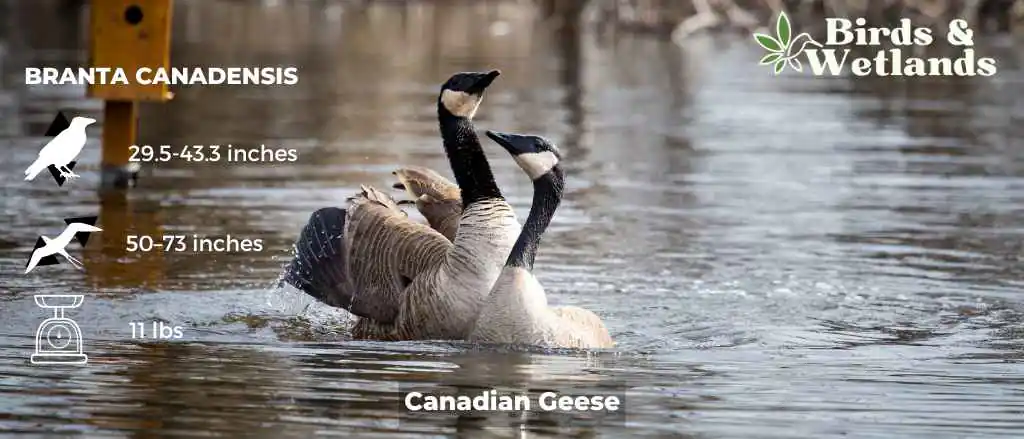The Canada goose (Branta Canadensis) is one of the most common North American birds. It is easily recognized for its long neck and large body, with brown and black feathers on its back and white feathers on its underbelly.
Canada geese are known for their seasonal migrations, traveling south in the winter to find warmer temperatures and returning north in the spring. The exact routes of these migrations vary yearly depending on weather conditions and other factors.
In addition to their migration habits, Canada geese are noted for their tendency to congregate in large numbers at certain times of the year. In fact, it is not uncommon to come across flocks of hundreds or even thousands of Canada geese during certain seasons.
Previously, the cackling goose was considered the same species as the Canada goose.
Population & Habitat
Non-migratory Canada goose populations in North America have been rising. Due to their primarily urban lifestyle and a strong preference for golf courses and other man-made habitats, these North American birds are considered an invasive species in many areas. These birds favor large, flat spaces in urban areas such as golf courses, parks, and areas with manicured lawns and retention ponds.
Within these environments, they prefer open grasslands or shallow wetlands with easy access to both land and water resources.
The Canada goose is well adapted to living in city environments, even though most other birds have difficulty thriving in these urban settings. This big waterfowl can successfully find food and shelter in our streets, parking lot and parks, thanks to a combination of physical adaptations and behavioral strategies.
Canada geese possess special physical features that help them survive in an urban environment. Their large bodies allow them to easily travel between different food sources, while their long necks and sharp beaks enable them to forage for food on land or water easily. Additionally, they can withstand harsh weather conditions due to their dense plumage and layer of fat.
Canada geese are also skilled at adapting their behavior to fit into the city environment. For example, they can be quite stealthy, making it difficult for humans to see or hear them as they search for food. They are also very social animals that flock together, allowing them to remain safe from predators even when they are away from shallow waterways.
Because of their adaptability and resilience to changing climatic conditions, the Canada goose will likely remain a common sight in many urban environments for years to come.
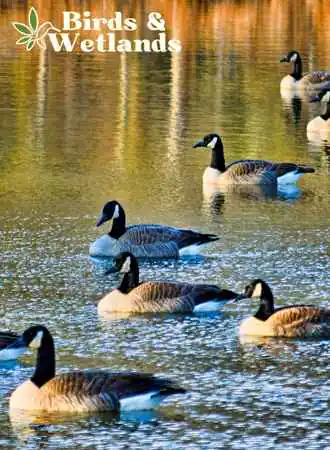
Range
Depending on the subspecies, the breeding range of Canada geese in North America is vast and diverse. These graceful birds are found across much of the continent, from Alaska to Florida and from the east coast to the west. For instance, the giant Canada goose breeds in Indiana and other neighboring states and usually migrates to the southern parts of the United States in the winter.
Canada geese are also well-suited to a wide variety of habitats, from forested areas with wide open clearings, to wetlands and riverbanks, to lakeside meadows and high mountain ranges. Their adaptability allows them to thrive in a wide range of climates, ecosystems and natural resources, making them one of North America’s most prolific bird species.
Some Canada geese migrate south in the winter but most Canada geese do not migrate unless forced to by severe weather. Like many species of waterfowl, Canada geese travel in family groups and fly in a V-formation to conserve energy and easily spot predators and other dangers. In some instances, Canada geese have been spotted migrating with other species of waterfowl such as ducks and swans.
Each local population of Canada geese follows a particular migratory path with established stopovers and wintering areas. Many geese are now permanent residents in cities and refuges.
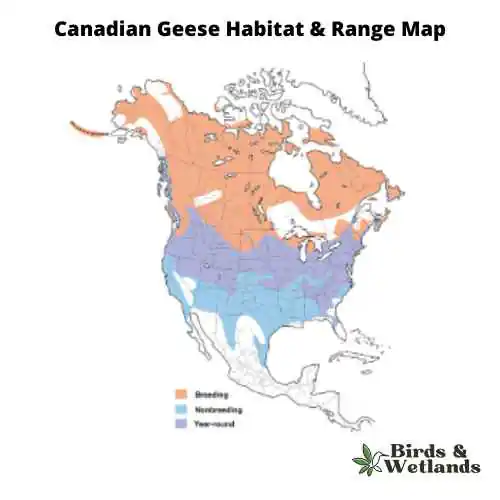
Food
Canada geese tend to prefer plant matter like grasses, aquatic vegetation and seeds, but they will also occasionally take advantage of insects, grains, small fish, berries, and other food sources that happen to be nearby. These omnivores will also consume garbage and agricultural waste if necessary to keep them going throughout the year. In urban areas, Canada geese’s usual feeding areas include locations with lawn grass. What Canada geese eat depends on quite a bit on their environment and the availability of different types of food.
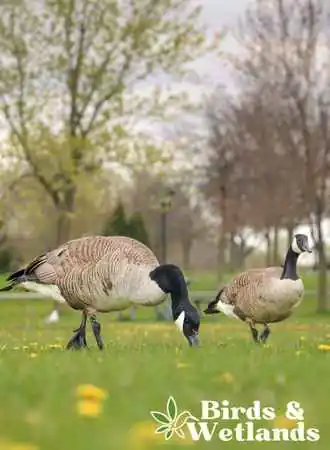
Nesting
Canada geese pair up in late winter and early spring, then begin looking for and constructing their nests in March and April. Usually, the nesting season or breeding season of the Canada goose is from early March to late May.
Canada geese are typically found in wetlands and other watery environments, where they prefer to build their nest on cliff ledges, muskrat houses, or low-lying trees. However, some individuals will also construct nests on artificial platforms close to the water. Generally, nests are located in an elevated area or near water and a food source, with an unobstructed view of the surroundings so that the Canada geese can easily spot potential predators.
The female goose chooses the nest site, builds the nest itself and incubates her eggs. The nest is often made from dry grasses, twigs and other plant material. While the female incubates the eggs, the male stands guard nearby. The average incubation period is 25 to 28 days.
After the goslings hatch, they can walk, swim, and find their food. These young geese have the same diet as adult geese. Young geese don’t leave their parents until after the spring migration. During this time, some goslings will band together and follow a few adults to form a creche or gang broods.
Most Canada geese mate for life. But when a pair dies, the surviving pair may search for a new mate.
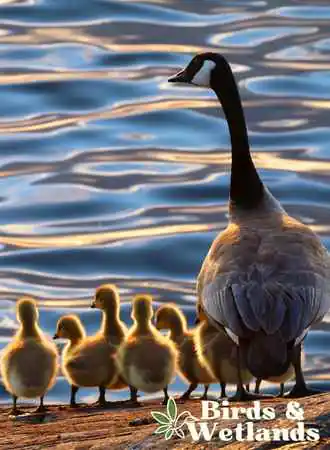
Behavior
Canada geese are well known for their aggressive behavior. This is partly because they are a territorial species. Each goose has its own territory, which it defends against other geese. In addition, Canada geese form large flocks during the winter months, and these groups can often be quite aggressive toward other animals in the area. Another factor contributing to their aggressive nature is that Canada geese have excellent vision, allowing them to spot any perceived threats from great distances easily.
One of the earliest indications that a goose may be about to strike is its upright posture. When agitated or feeling threatened, Canada geese typically stand erect, long necks stretched upward and wings wide. In addition to its upright stance, its hissing sound is another sign that a goose may be ready to attack.
Like many other animals, geese produce distinctive vocalizations when feeling threatened or aggressive, and you may hear them hissing as they approach you in an attacking stance. Upon actually charging at you, a Canada goose may peck at your body or fly into you with its powerful wings. So if you ever encounter a large group of geese while out in the wild, exercise caution and give them plenty of space.
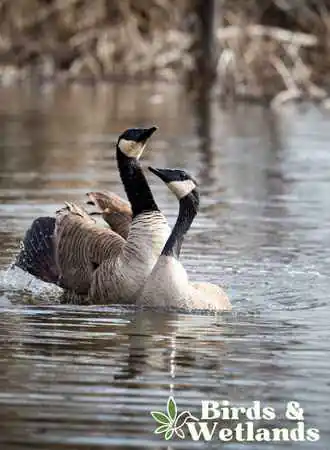
Molting
Canada geese molt each summer, usually in late June or early July. Adult geese cannot fly during this period since they must completely replace their flight feathers. Once they have completed this process and young geese grow their first flight feathers, they flock together and begin their annual migration.
During molting, the Canada goose is particularly vulnerable to predation because it cannot fly. Fortunately, this bird has a sharp distance vision, allowing it to spot danger from a great distance. Additionally, it has an extremely keen sense of movement, allowing it to detect approaching predators even before they become visible to the human eye. When threatened, the Canada goose responds with a loud and aggressive vocalization that warns off potential attackers.
There are a number of natural predators that prey on Canada geese. Animals like foxes, raccoons, and skunks will all hunt geese for their food, as well as certain birds of prey such as hawks and eagles. These animals usually target young or sickly geese, displaced mothers who may have lost their young to other predators or molting geese.
Conservation
Canada geese populations in the past were almost on the brink of extinction. In fact, the giant Canada goose subspecies was even thought to have been extinct. In 1962, Dr. Harold Hanson of the Illinois Natural History Survey concluded that the geese that wintered at Rochester, Minnesota, were giant Canada geese.
The population of Canada geese in the United States is currently monitored and managed by the US Fish and Wildlife Service. This organization employs various strategies to discourage excessive goose migration into urban areas and maintain healthy populations.
One method is to use scare devices, such as loud noises or flashing lights, designed to scare away geese. Another approach involves capturing and relocating geese to uninhabited areas within their natural range. The US Fish and Wildlife also works with cities on zoning issues that allow for controlled hunting in certain areas, further reducing the overall bird population.
Canada geese are protected under the Migratory Bird Treaty Act. This means these geese are afforded special rights and protections, such as being hunted during specified seasons and within carefully defined hunting parameters.
For example, to legally hunt Canada geese, one must have a valid hunting license and observe certain hunting regulations and restrictions, such as the required distance from occupied dwellings or restrictions on the use of certain duck decoys. In addition, all hunting methods and technologies must be approved for use by wildlife management agencies.
The average life span of a Canada goose is 10-25 years.
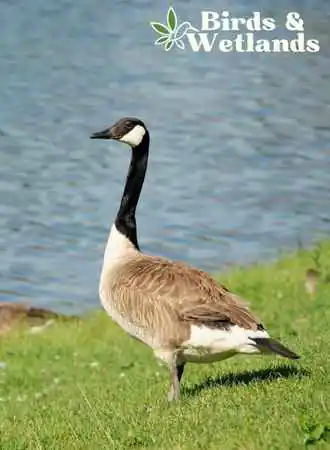
Key Points
Once the eggs hatch, goslings can walk, swim and search for food with their parents.
The female lays eggs and incubates them while the male stands nearby.
Adult Canada geese molt annually, usually in the summer.
Canada geese nest sites are typically located in elevated areas, such as on islands, small hills, or bushes. These sites provide the geese with a safe and protected environment to raise their young.
Nest sites near bodies of water, such as lakes or rivers, allow the geese to access the water for food and habitat. In general, Canada geese choose nesting sites that offer both protection from natural predators and good resources for their young.
Geese prefer to nest in areas where approaching predators can be easily seen.

Jim Addison is an avid bird watcher and has been obsessed with the activity since he was a young boy.
He has traveled all over North America in search of new and interesting species to observe, and his detailed knowledge of the subject makes him a sought-after expert on the topic.

